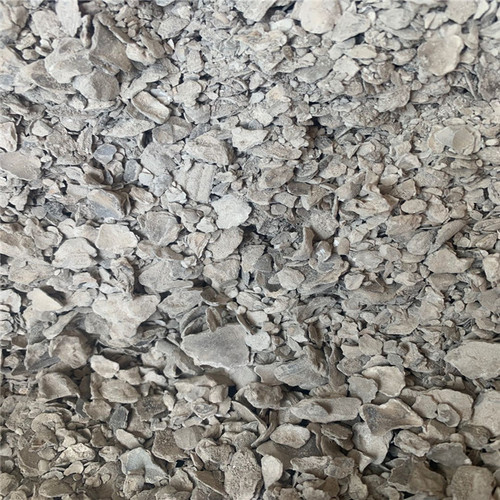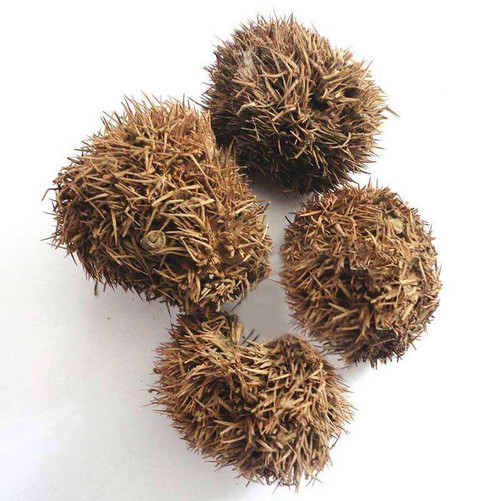Product Overview
Parts used: The shell
TCM category: Herbs that anchor and calm the SpiritHerbs that pacify Internal Liver Wind and stop Tremors
TCM nature: Cold
TCM taste(s): Salty
Meridian affinity: Bladder Gallbladder Kidney Liver
Scientific name: Ostrea
Use of oyster shells (Mu Li ke) in TCM
Please note that you should never self-prescribe TCM ingredients. A TCM ingredient is almost never eaten on its own but as part of a formula containing several ingredients that act together. Please consult a professional TCM practitionner, they will be best able to guide you.
Preparation: Collect shells and dry. Crush before use
Dosage: 15 - 30 grams
Main actions according to TCM*: Calms and anchors the spirit. Moistens Dryness. Softens and removes lumps. Nourish the Yin and subdues the overflowing of the Yang,
Primary conditions or symptoms for which oyster shells may be prescribed by TCM doctors*: Palpitations Insomnia Dizziness Tinnitus Scrofula Abdominal bloating Night sweats Urinary incontinence Abnormal uterine bleeding Leukorrhea Vaginal discharge Headache Restlessness
Contraindications*: Oyster shells should not be used by those who are Cold and weak nor by those with high fever without sweating.
Common TCM formulas in which oyster shells are used*:
For glandular swellings or cervical or occipital lymphatic swelling combine oyster shells with fritillary bulbs (Chuan Bei Mu), ningpo figwort roots (Xuan Shen) and heal-all spikes (Xia Ku Cao).
For flank pain or pain beneath the ribs combine oyster shells with red peony roots (Chi Shao), bupleurum roots (Chai Hu) and red sage roots (Dan Shen).
For goitre, lymph node swellings, glandular swellings, or nodules on the neck combine oyster shells with clam shells (Ha Ke), sargassum (Hai Zao) and kombu (Kun Bu).
Key TCM concepts behind oyster shells (Mu Li ke)'s properties
In Traditional Chinese Medicine (TCM), oyster shells are plants that belong to the 'Herbs that anchor and calm the Spirit' category. These herbs are substances that tranquilize the mind and treat symptoms such as restlessness, palpitations, anxiety or insomnia. They tend to have sedative properties by weighing the Qi downwards and should generally be used for a limited time only.
Furthermore oyster shells are plants that are Cold in nature. This means that oyster shells typically help people who have too much "heat" in their body. Balance between Yin and Yang is a key health concept in TCM. Those who have too much heat in their body are said to either have a Yang excess (because Yang is Hot in nature) or a Yin deficiency (Yin is Cold in Nature). Depending on your condition oyster shells can help restore a harmonious balance between Yin and Yang.
Oyster shells also taste Salty. The so-called "five elements" theory in Chinese Medicine states that the taste of TCM ingredients is a key determinant of their action in the body. Salty ingredients like oyster shells tend to have a draining effect in the body because they clear accumulations, remove phlegm and soften hard lumps.
The tastes of ingredients in TCM also determine what organs and meridians they target. As such oyster shells are thought to target the Bladder, the Gallbladder, the Kidney and the Liver. In TCM the impure water collected by the Kidneys that cannot be used by the body is sent to the Bladder for storage and excretion as urine. Similar to modern medicine, in TCM the Gall Bladder stores and releases bile produced by the Liver. It also controls the emotion of decisiveness. The Kidneys do not only regulate the urinary system but also play a key role in the reproductive system and the growth and aging process of the body. The Liver is often referred as the body's "general" because it is in charge of regulating the movements of Qi and body fluids. It also takes a leading role in balancing our emotions.








